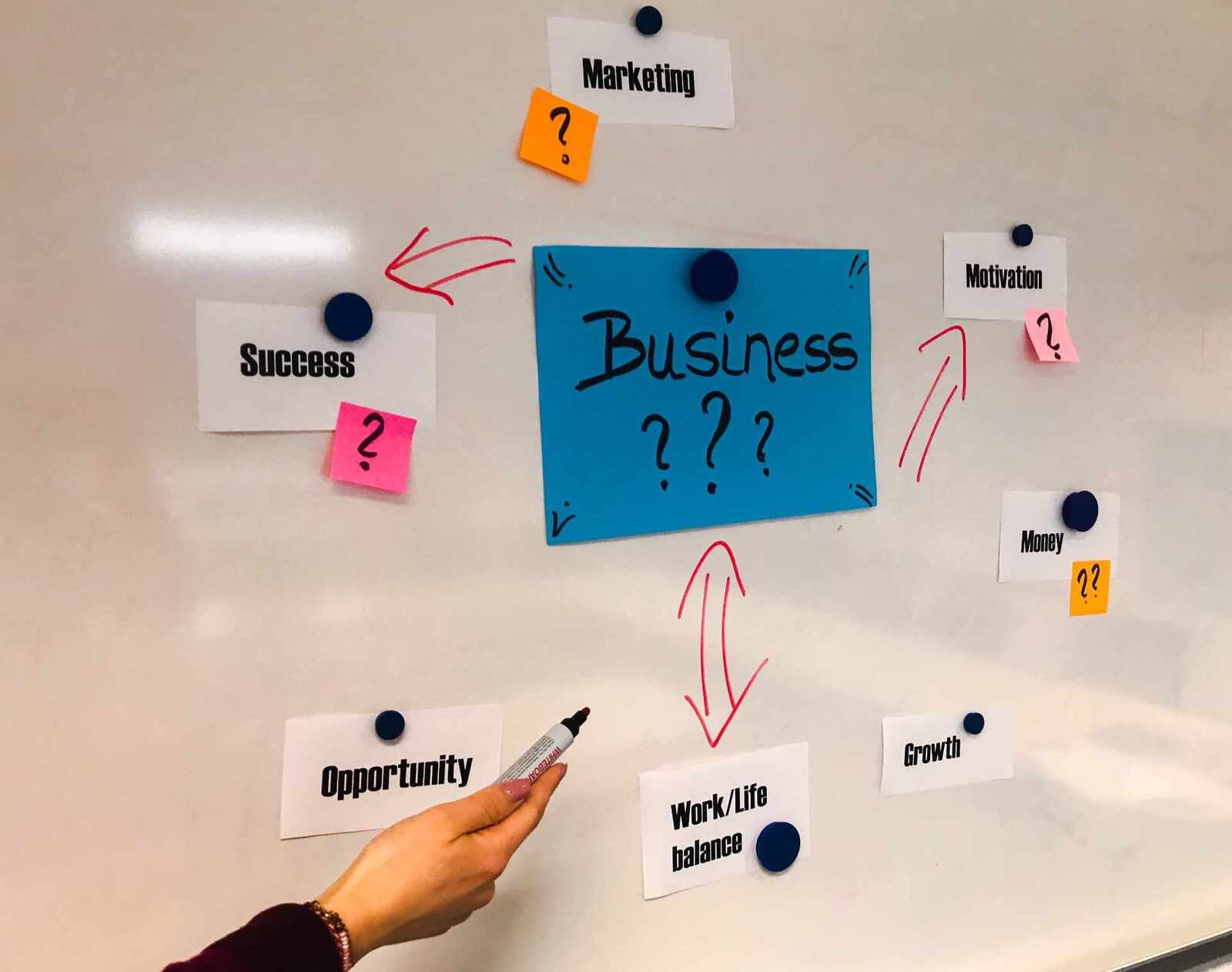
Company culture is a powerful force that shapes behavior and values, uniting employees under a common purpose. It embodies the organization's identity, influencing how work is conducted and driving success through motivation and innovation. An emerging trend in the business landscape is the rise of in-house agencies handling tasks like marketing and advertising internally. While promising benefits like cost savings and brand understanding, in-house agencies can disrupt organizational culture.
Companies must balance the benefits and potential risks of in-house agencies. If not addressed, these risks can erode unity and mutual purpose critical to long-term success. Understanding the impacts and cultural challenges associated with in-house agencies is vital in this evolving business environment.
Us vs. Them Mentality: A Barrier to Collaboration
In-house agencies can unintentionally foster an "Us vs. Them" dynamic within an organization. The specialized skills and distinct focus of the agency often set it apart from other departments, resulting in a division between 'the agency' and 'the rest of the business.' This isolation can be further exacerbated by the contrasting mindsets of creative teams, who prioritize innovation and creative freedom, and corporate teams, who may lean more towards speed to market and risk management.
The divide that springs up between the agency and the rest of the company can lead to communication breakdowns, misalignment of goals, and a lack of mutual understanding. In extreme cases, this can fuel a perception of favoritism or bias, provoking internal competition and resentment. A healthy sense of competition can drive performance, but when it turns into rivalry, it risks undermining the unity of the organization, ultimately causing more harm than good.
When teams view each other as competitors rather than collaborators, it becomes harder for them to work together towards the common goal of the organization's success. The collaborative spirit that underpins effective organizations may be replaced by a destructive 'Us vs. Them' mindset, where each team is solely focused on its own success rather than the broader objectives of the organization.
The 'Us vs. Them' mentality also has a ripple effect on information sharing and cooperation. Teams may become protective of their knowledge and resources, hindering the open exchange of ideas and expertise necessary for innovation and problem-solving. This can lead to duplication of efforts, inefficiencies, and missed opportunities for cross-functional collaboration.

By emphasizing the interdependence of all departments and teams, organizations can ensure that every employee understands that their success is intricately linked to the success of the whole rather than just their individual department or team. Regular cross-departmental meetings, joint projects, and team interactions can help break down barriers and promote the free exchange of ideas and expertise.
This culture of unity and collaboration can help mitigate the divisive effects of an 'Us vs. Them' mentality and ensure that in-house agencies contribute positively to the overall success of the organization. Above all, understanding that accountability, process consistency, and alignment to achieving the company goals should be equally important to all teams regardless of their department. After all, in-house agency is just a fancy term for coworkers, and they should be held to the same standards.
Subcultures: Fragmentation within the Organization
Establishing in-house agencies can inadvertently give rise to subcultures within an organization. A subculture is essentially a group within the larger organizational culture that develops its own unique set of norms, values, and beliefs. While it is common and even healthy for different departments within an organization to have slight variations in their cultural fabric, it becomes problematic when these differences are so significant that they lead to fragmentation within the organization.
In the case of in-house agencies, their inherently creative and innovative nature often sets them apart from the rest of the organization. They tend to operate in a highly dynamic, fast-paced environment, with norms and values that could be quite different from those of the more traditional, process-driven departments in the organization. This divergence can create friction and misunderstanding, hindering communication flow and causing goal misalignment. These challenges are often exacerbated when the in-house agency is resistant to change.
As these subcultures grow stronger, they can create silos within the organization. Silos are barriers between different departments or teams that prevent them from sharing information and collaborating effectively. In a siloed organization, teams become inward-focused and lose sight of the larger organizational goals. This leads to inefficiencies and duplications of effort and can even give rise to internal competition and conflict.
These subcultures can also undermine company-wide initiatives. If an in-house agency's subculture is not aligned with the overarching organizational culture, it can lead to resistance against broader strategic objectives. For example, an in-house agency might prioritize creative innovation over cost efficiency, which could conflict with an organizational focus on cost reduction even when the initiative is dire.
Organizations must ensure that the overarching company culture is strong enough to embrace these subcultures without being overshadowed by them. This might involve fostering a culture of mutual respect and understanding, promoting cross-departmental collaboration, and aligning all teams, including the in-house agency, around a shared vision, set of processes, and common organizational goals.
By taking these steps, organizations can leverage the unique strengths of their in-house agencies without letting subcultures disrupt the unity and cohesiveness of the company culture.

Disconnected Leadership Alignment
Leadership alignment is crucial to any organization's success. It entails shared goals, values, and a united front from leaders across all departments. However, the traditional alignment can be disrupted when an in-house agency enters the mix. In-house agency leaders might have differing objectives and approaches compared to leaders of other teams within the organization. These differences can pose a challenge to the harmonious leadership alignment that's essential for an organization's success.
In-house agency leaders often prioritize creativity, innovation, and a deep connection with the brand, while other business leaders might prioritize profitability, risk mitigation, and efficiency. The disconnect between the two can create misunderstandings and friction, especially when deadlines are strict and the workload significant. While a healthy level of diversity in leadership perspectives can stimulate innovation and robust decision-making, extreme differences can lead to conflicting decisions, misaligned strategies, and a lack of coordinated efforts.
This lack of alignment can have cascading effects down the ranks. Employees look to their leaders for direction, and when leaders are not on the same page, it can result in confusion, decreased morale, and even burn out among the workforce. The unclear direction can impede decision-making, slow down processes, and negatively affect the organization's agility and responsiveness to changes in the business environment.
In addition, the misalignment between leadership teams can lead to a fragmented vision of the organization's future. Each team may work towards a different image, leading to disjointed efforts and reduced efficiency. The organization might need help to make strategic progress if teams pull in different directions.

Organizations need to ensure robust channels of communication and collaboration among leaders. Regular meetings and workshops can be a platform for leaders to understand each other's priorities and work together to develop a unified vision and strategy. Ensuring all projects align to company goals is another easy way to ensure different teams have shared priorities. It's also essential to foster a culture of mutual respect among leaders, recognizing that each group brings its own unique value to the table.
Aligning the performance metrics of in-house agency leaders with the overall organizational goals can help ensure they work towards the same objectives as the rest of the leadership team. By fostering aligned leadership, organizations can ensure a cohesive and coordinated approach to decision-making and strategy execution, optimizing overall organizational performance and employee morale.
Fragmented Recognition: Focusing on Segments, Neglecting the Whole
Recognition is vital for job satisfaction, motivation, and employee engagement. It celebrates the achievements of employees, highlights the desired performance, and bolsters commitment to organizational goals. However, in-house agencies can inadvertently disrupt the harmony of recognition within an organization, leading to fragmented and uneven appreciation.
In-house agencies often operate on a different recognition and reward system tailored to the specific needs of their creative teams. They may have unique agency awards, distinct bonus structures, and different benchmarks for success that are often more focused on creativity and innovation. While these recognition strategies are designed to motivate the agency staff, they can inadvertently create a chasm in the broader organization if the agency doesn't share in a get-it-done mentality.
When recognition is compartmentalized, it can inadvertently create a perception of inequality among the rest of the organization's employees. Staff outside the in-house agency might feel overlooked or undervalued if they perceive the agency team as receiving a disproportionate amount of recognition. They could also feel like the praise is unwarranted if their projects are not completed on time due to the misalignment of goals. This can lead to decreased motivation, engagement, and even resentment among the other employees.

This fragmentation of recognition can also disrupt the collective sense of achievement. If recognition focuses on the successes of one segment of the organization while neglecting others, it can result in a disconnect in the perception of organizational success. Employees may struggle to see how their work contributes to the organization's overall success if the spotlight is consistently focused on the achievements of the in-house agency especially when it's at the cost of other employee goals.
Organizations need to implement a balanced recognition system that equally appreciates the efforts and successes of all departments. This doesn't mean abandoning specialized recognition programs for in-house agencies but rather complementing them with broader recognition initiatives that celebrate collective achievements.
It's also crucial to ensure transparency in the recognition process. Employees should understand what is being recognized, why, and how it aligns with the organization's goals. By implementing these measures, organizations can create a culture of recognition that motivates all employees, fosters a sense of collective accomplishment, and underscores the interconnectedness of all teams in the journey toward organizational success.
Risk of Team Separation: Building Silos
By their nature, in-house agencies promote a certain level of separation within an organization. They operate independently, often following their own processes and methodologies, distinct from the broader organization. While this separation can help maintain a high degree of specialization and efficiency, it can also inadvertently encourage the creation of silos within the organization or even make the in-house agency team members believe they don't have to align to the connected processes of the rest of the company.
The autonomy and specialized skillset of in-house agencies might encourage some ambitious team members to consider branching off to establish their own companies. After all, if they can successfully operate an agency within a larger organization, why not start an independent one? While this entrepreneurial spirit can be lauded, the resulting attrition could disrupt the organization's stability and growth, leading to the loss of key talents and potentially damaging the organization's competitive position.
Regular cross-departmental meetings, shared projects, and the intermingling of teams can help break down barriers and encourage collaboration. Leadership should also emphasize the importance of collective goals and shared success, reminding everyone that they are all part of the same organization, working towards a common objective.

Moreover, organizations could implement measures like career development opportunities, performance-based rewards, and inclusivity in decision-making to discourage the potential risk of team members branching off. These steps can ensure that team members feel valued and integral to the organization, reducing the allure of starting their own companies.
Competing Priorities and Resources
In-house agencies, while bringing valuable capabilities to the table, can inadvertently lead to competing priorities and resource conflicts within an organization. As these agencies focus on specific tasks, they may vie with other departments for limited resources and attention, resulting in potential clashes over budget allocation and priority setting. The ensuing competition can create tension and a sense of rivalry among teams, impacting the overall performance and harmony of the organization.
Such resource competition may cause departments to view each other as adversaries rather than collaborators, creating a fractured sense of unity. Instead of working together towards shared goals, teams may become preoccupied with defending their interests or favorite projects, potentially hindering the organization's collective progress. This dynamic can also erode employee trust and strain interdepartmental relationships, negatively affecting communication and cooperation.

Navigating the Agency Within
As we have navigated through the intricate world of in-house agencies, we have seen how they can inadvertently disrupt the unity and harmony of an organization's culture. From fostering an 'Us vs. Them' mentality to creating subcultures and leadership misalignment, from generating fragmented recognition to encouraging the formation of silos and risk of team separation, the potential cultural ramifications of in-house agencies are significant.
However, recognizing these risks is the first step in addressing them. Understanding the potential negative impacts on organizational culture prepares businesses to strategically manage their in-house agencies. By being proactive, organizations can cultivate an environment that balances the benefits of an in-house agency – such as cost savings, intimate brand understanding, and speedy delivery – with the need for a cohesive, unified, and inclusive company culture.
It's crucial for businesses to carefully evaluate the potential risks and benefits before establishing an in-house agency. Leaders should ensure that introducing an in-house agency aligns with the organization's broader strategic goals, culture, and structure. They should have clear strategies to foster collaboration, ensure leadership alignment, promote balanced recognition, and discourage silo formation.
If carefully managed, an in-house agency can serve as a valuable resource that complements an organization's capabilities without eroding its culture. It can offer the creativity, speed, and brand focus of an external agency while fostering a sense of unity and shared purpose. As businesses navigate the course towards leveraging internal resources while preserving their cultural identity, they need to maintain a delicate balancing act – harnessing the strengths of the agency while incorporating them as the coworkers they are to the rest of the teams.

